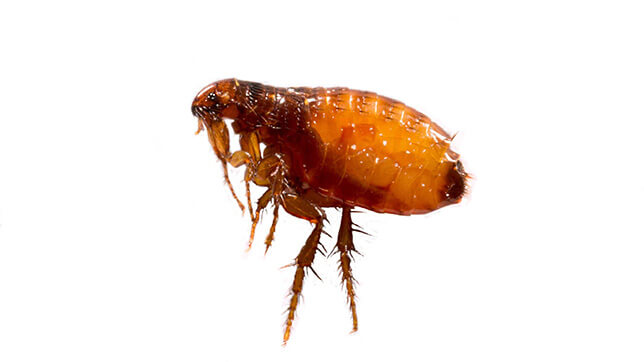17th August 2017
Our dogs can be at risk of infestation from parasites which can lead to infections, but these can often be controlled, treated or prevented. Their soft, warm fur provides a perfect environment for pests like fleas and ticks. The health problems associated with these bloodsuckers vary from an allergic reaction to serious illnesses carried by the insects.
We look at how dogs pick up ticks and fleas, how to spot and prevent them, and if there’s any way of removing the parasites.
 How do dogs get ticks and fleas?
How do dogs get ticks and fleas?
Ticks and fleas are more common during the warmer months and you’re likely to see them between Spring and Autumn, but they’re active throughout the year. They’re usually hiding in woodlands, grasslands and heath areas, but they can also be found in our gardens.
Ticks will often drop or climb onto the animals they want to feed on as they brush past whatever it is they’re waiting on.
Fleas, on the other hand, can jump, and they can get onto our dogs from other hosts or from the environment they live in.
How can I spot ticks and fleas on dogs?
Once you get home from your walk, it’s a good idea to check your dog for any ticks that might be crawling about, trying to find the perfect spot to dig in to. Run your hands through their fur and over their body and look for any unusual bumps, especially around your dog’s:
- Ears
- Groin
- Head
- Neck
- Armpits
- Feet
- Toes
Brushing can also help remove any ticks that are about to attach themselves.
With fleas, the first sign that a dog is carrying some unwanted visitors is repeated itching, scratching and chewing which may lead to patches of hair loss and reddened skin. You might even spot the fleas on your dog or find flea dirt on their skin.
How can I prevent ticks and fleas on my dog?
There are different products that can be used to help repel ticks or fleas or kill them when they attach themselves to your pet. The treatments available include:
- Spot on
- Tablets
- Collars
Cleaning and vacuuming your home regularly will destroy fleas at each stage of their lifecycle and help prevent an infestation. If you only use preventative treatment on your dog, and not your home, then it’s likely that if your dog does bring a flea home then they will keep returning as they can live in carpets, bedding and furniture for months without a host.
How do I remove a tick from my dog?
When you spot a tick on your dog it needs to be removed as quickly and as carefully as possible. Don’t poke, prod, try to burn or suffocate the tick as this could make them regurgitate their bloody meal back into your dog’s body along with any disease they might be carrying.
The safest way to remove a tick is to twist them out of where they’ve attached themselves, as this will help ensure that they are removed whole with no mouth parts left inside your dog. Make sure to check that nothing has been left behind.
Pet shops and vets often sell a removal tool that can make this a little easier than using tweezers. If you’re unsure on how to go about removing a tick safely your vet might be able to show you how to do it.
What should I do when I find a flea on my dog?
When you find a flea on your dog it’s important to treat your pet as quickly as possible as they can give your dog tapeworms and spread diseases. You should treat your home at the same time in case you have fleas and larvae living in your furniture, floors and skirting boards.
Just remember that dogs will often pick up ticks and fleas but knowing how to properly treat these parasites can help prevent your dog from picking up any pest-related diseases.
Our veterinary partners, Joii Pet Care, are offering Animal Friends customers a 25% discount on their all in one preventative tick, flea and worm treatment to help keep your pet free of parasites. Joii’s preventative prescription covers all the ticks found in the UK, something that not all available treatment offers.
More on our dog blog
Read more news articles, opinion pieces, reviews and personal stories behind our dogs on our blog.
Need dog insurance?
Dog insurance can help cover the cost of veterinary treatment if your dog gets injured or falls ill.
